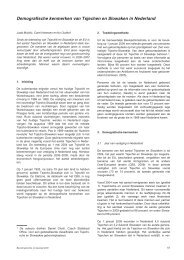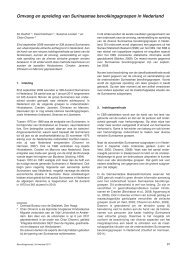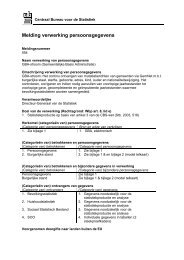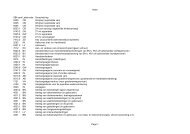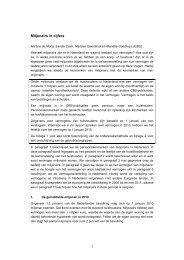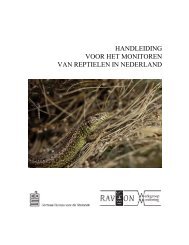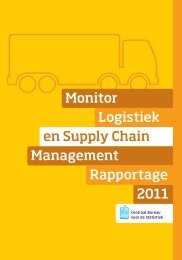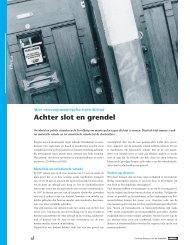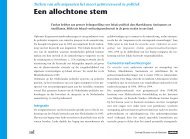Methoden voor de berekening van de emissies door mobiele ... - CBS
Methoden voor de berekening van de emissies door mobiele ... - CBS
Methoden voor de berekening van de emissies door mobiele ... - CBS
You also want an ePaper? Increase the reach of your titles
YUMPU automatically turns print PDFs into web optimized ePapers that Google loves.
Figure 1.8 Calculation of emissions from road traffic, emissions of heavy metals (cadmium,<br />
copper, chrome, nickel, zinc, arsenic, lead) due to consumption (combustion) of engine oil<br />
CONSUMPTION FACTORS<br />
ENGINE OIL<br />
liter/1000 km<br />
per<br />
- vehicle category<br />
per<br />
1000 liter ==>1000 kg<br />
EMISSIONS DUE TO OIL CONSUMPTION<br />
heavy metals<br />
per<br />
OIL CONSUMPTION<br />
- vehicle category<br />
- fuel type<br />
- road type<br />
- vehicle category<br />
- fuel type<br />
- road type<br />
1.4.2 IPCC emissions<br />
The emissions of the greenhouse gases CO2, CH4 and N2O due to traffic are calculated in the<br />
Netherlands in two ways: bottom-up and top-down. The bottom-up method is used for calculating the<br />
actual emissions; the top-down method is used for the IPCC emissions. In Chapter 9, the differences<br />
between the bottom-up and top-down methods will be explained in greater <strong>de</strong>tail.<br />
Top-down<br />
As part of the international policy efforts regarding climate change, which are coordinated by the<br />
Intergovernmental Panel on Climate Change (IPCC), it is mandatory to conduct an annual greenhouse<br />
gas emission inventory. To prevent overlap between the data from various countries, the IPCC<br />
recommends calculating greenhouse gas emissions based on fuel sales [ref 8: Thoughton et al., 1997].<br />
Sales data for fuels in the Netherlands, as in most other countries, are only known at the aggregate<br />
level; for example, the sales to all road traffic are known. The aggregated sales data can be converted<br />
into emission data per vehicle category; in this way, in a manner of speaking, calculations are<br />
conducted in a top-down fashion. In the present report, the top-down method is referred to as the<br />
IPCC method. The aggregated sales data (in Joules) are converted into emission data per type of fuel<br />
using CO2, CH4 and N2O emission factors (kg/joule) per fuel. These emission factors are listed in<br />
Section 1.6.2. The methodology is in accordance with the IPCC requirements [ref 68: IPCC, 1997].<br />
Section 1.5.2 provi<strong>de</strong>s information about the sales of motor fuels.<br />
Emissions (kg) =<br />
1000 kg<br />
VEHICLE KILOMETRES<br />
per - vehicle category<br />
- fuel type<br />
- road type<br />
PROFILES<br />
heavy metals<br />
type of fuelfuel sales (kg) * combustion value (MJ/kg) * Emission factor (kg/MJ)<br />
According to the IPCC-regulations the CO2 emission from the combustion of biofuels is not inclu<strong>de</strong>d in<br />
the figures. Tabel 1.31 shows the sales of total motor fuels (including biofuels) as well as biofuels, as<br />
reported by the <strong>CBS</strong> energy statistics (see the hyperlink un<strong>de</strong>r the table).<br />
25





